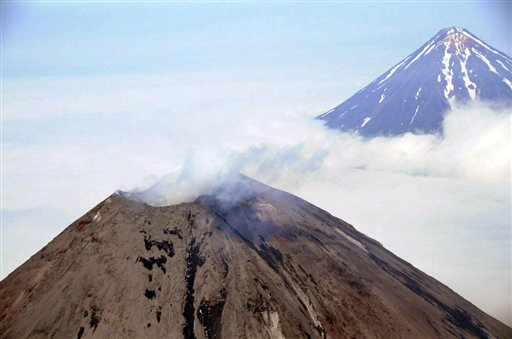
© AP Photo/NOAA, Kym YanoThis Monday, Aug. 8, 2011 file aerial photo provided by the National Oceanic and Atmospheric Administration shows Cleveland Volcano, left, located in the Aleutian Islands 939 miles southwest of Anchorage, Alaska. The volcano, which has sent up major ash eruptions in the past, is heating up near its summit. Scientists at the Alaska Volcano Observatory say satellite data obtained a week ago indicates a lava dome is growing in the summit crater. The observatory has changed its alert level for aircraft.
Anchorage, Alaska - Alaska's Cleveland Volcano is heating up and scientists are on alert in case it sends up an ash cloud that could threaten trans-Pacific flights.
The Alaska Volcano Observatory detected elevated surface temperatures Jan. 24 at Cleveland's summit. Satellite data obtained last week indicated that a growing lava dome on the floor of the summit crater had reached about 328 feet, or 100 meters, in diameter.
The summit crater itself is nearly 10 times that size, said Chris Waythomas of the U.S. Geological Survey.
"It does this from time to time and it's a fairly small lava dome," he said Wednesday. "It's not gigantic."
Lava domes form a lid on a volcano chamber that holds magma. When they grow big enough, lava domes can become unstable and collapse. Decompression of the magma chamber can lead to an explosion as the conduit inside the volcano suddenly becomes unsealed and gasses escape.
